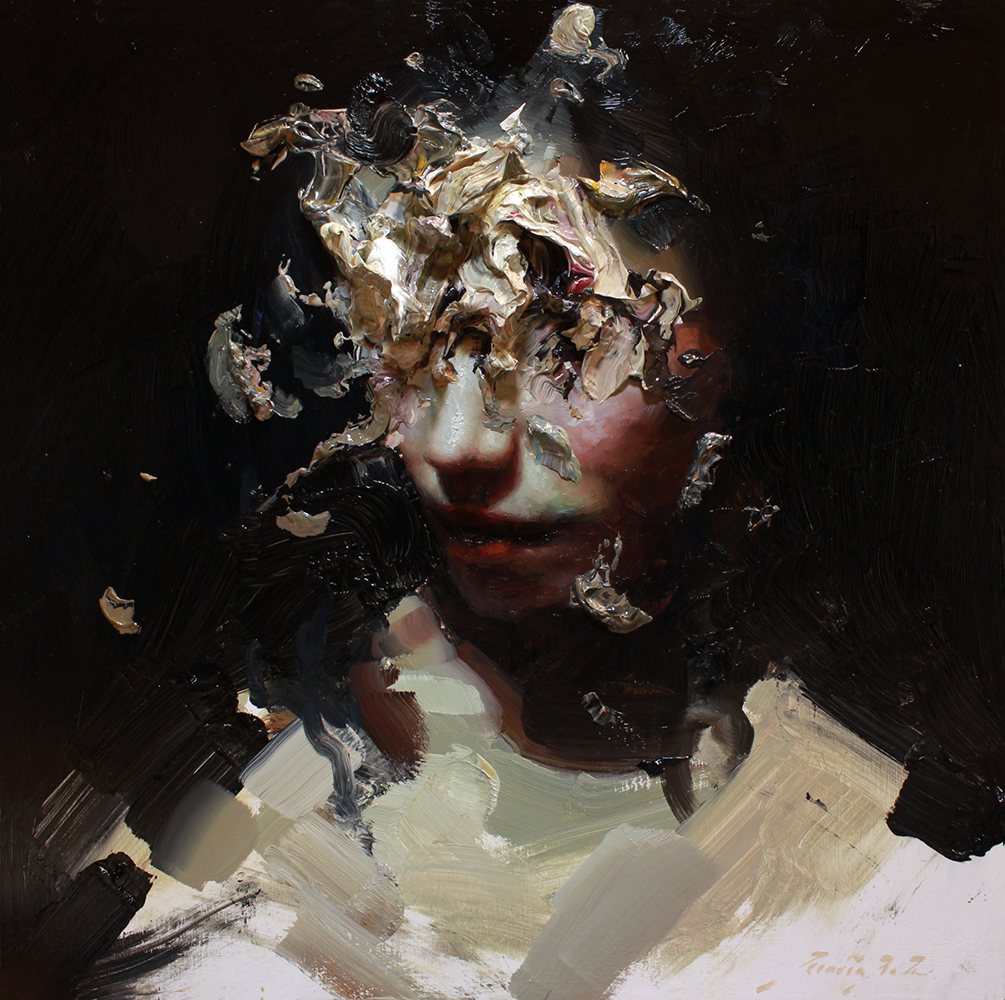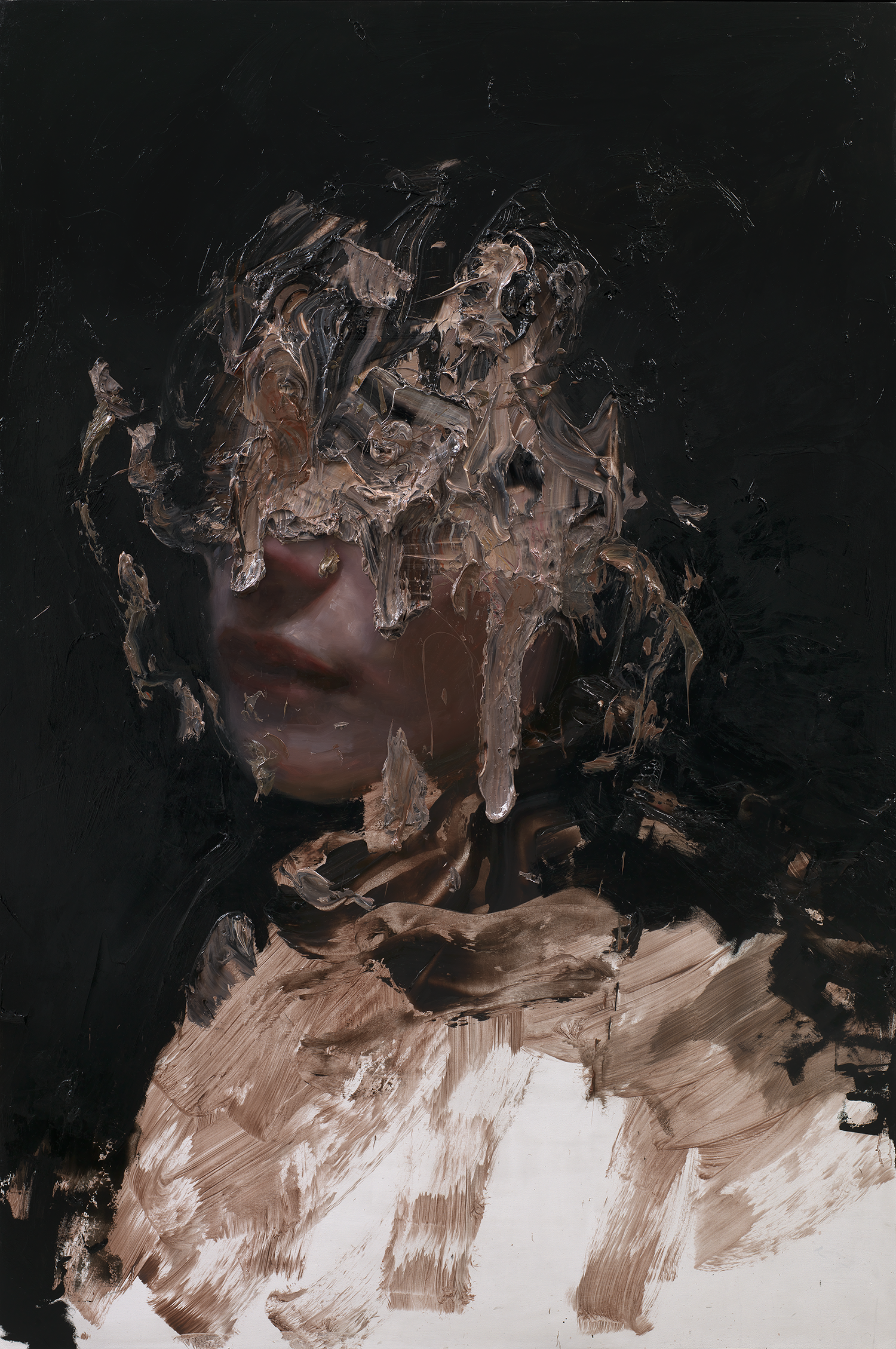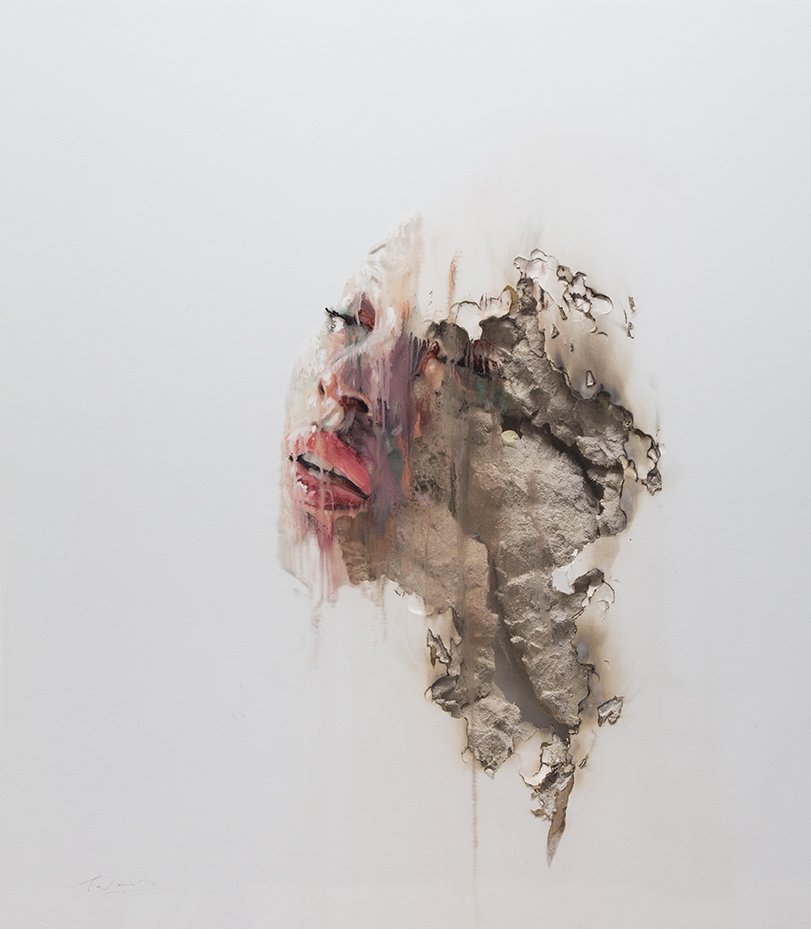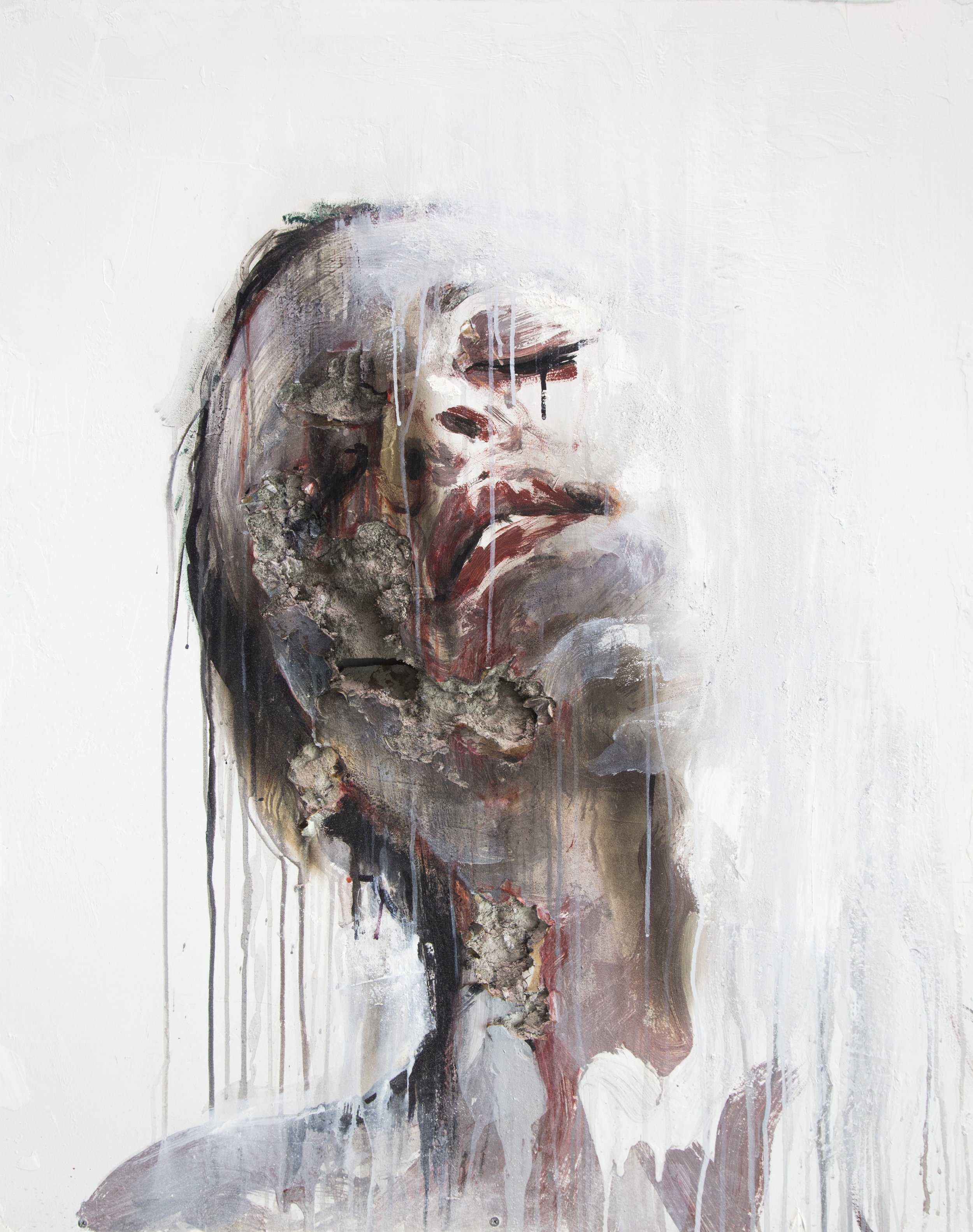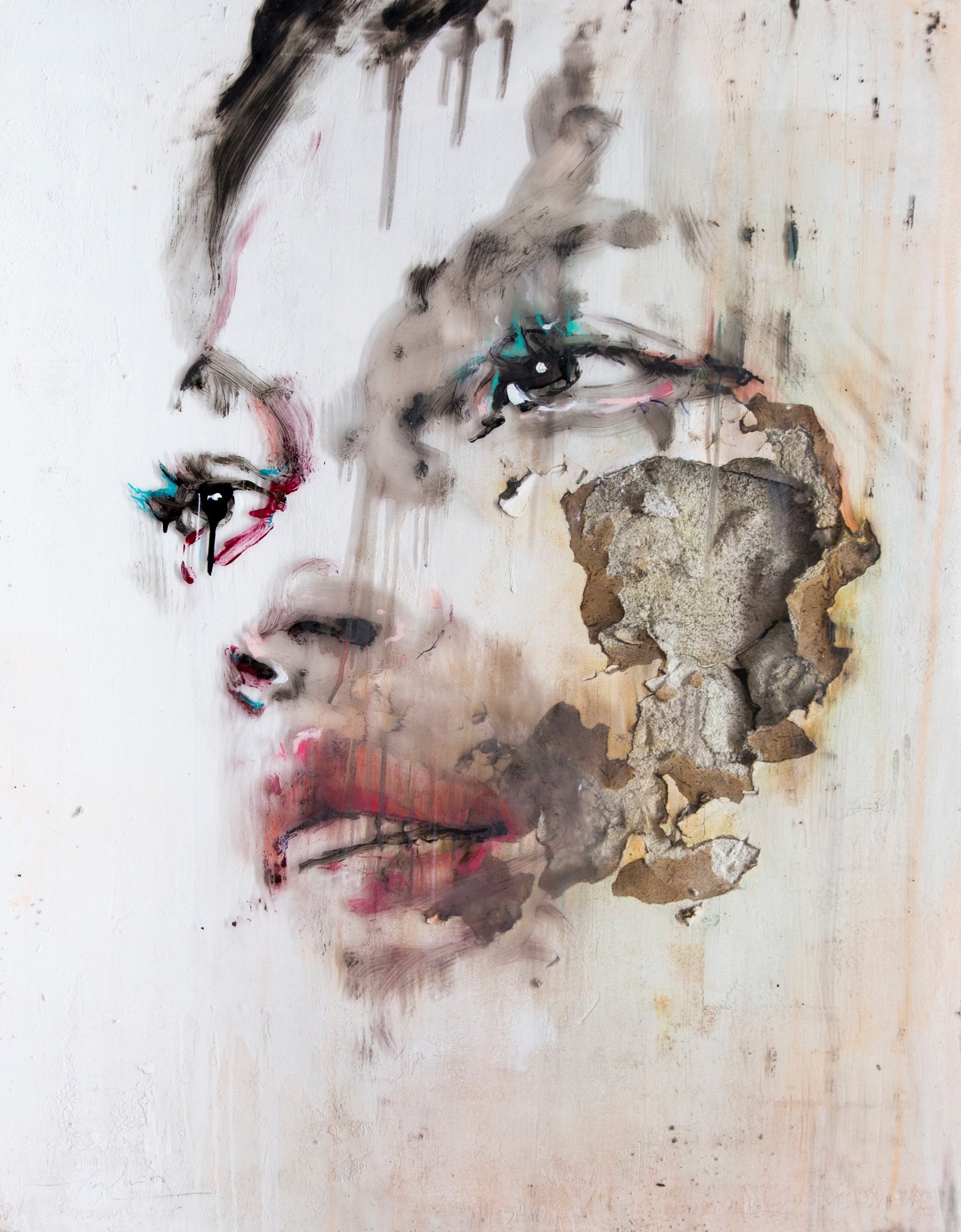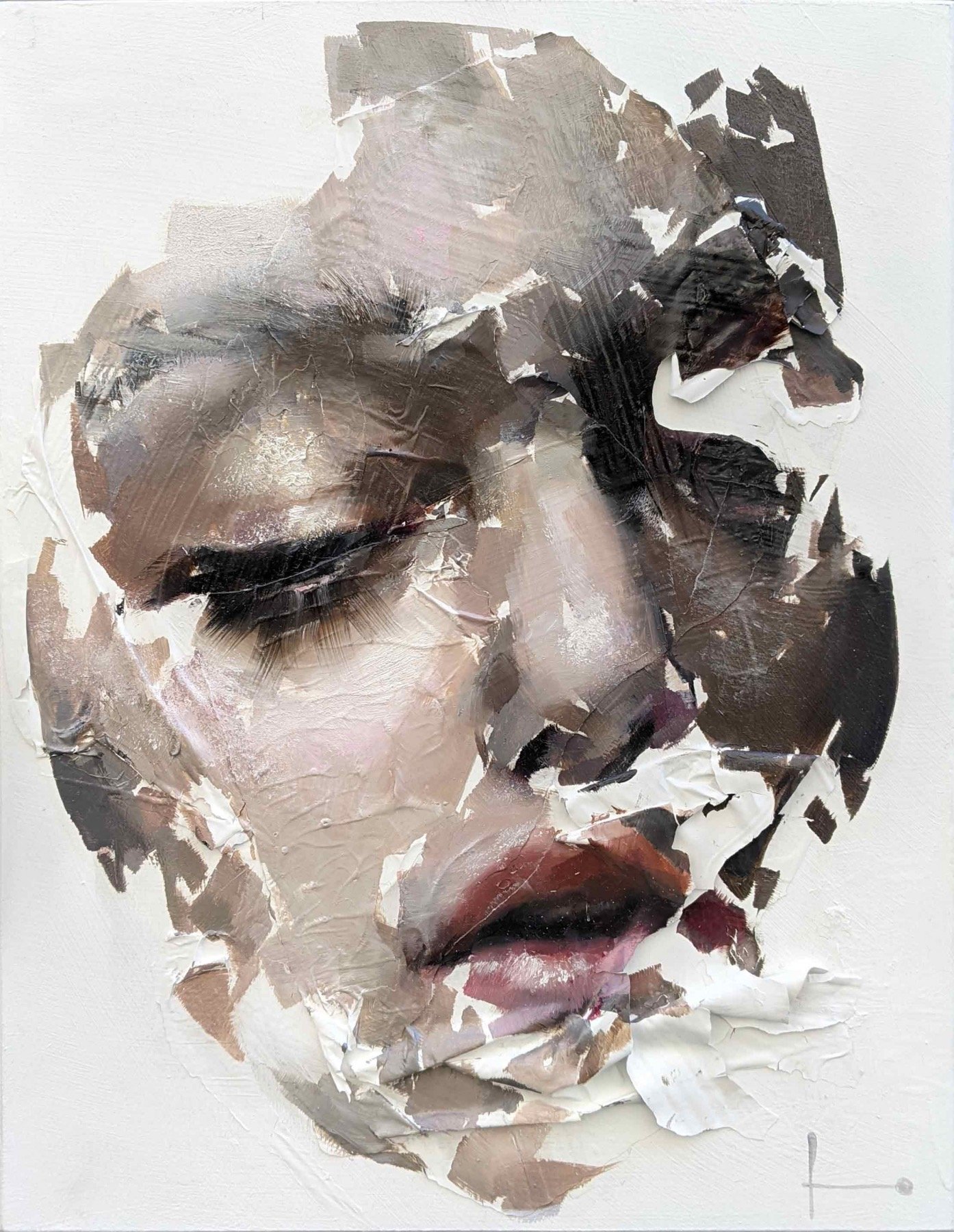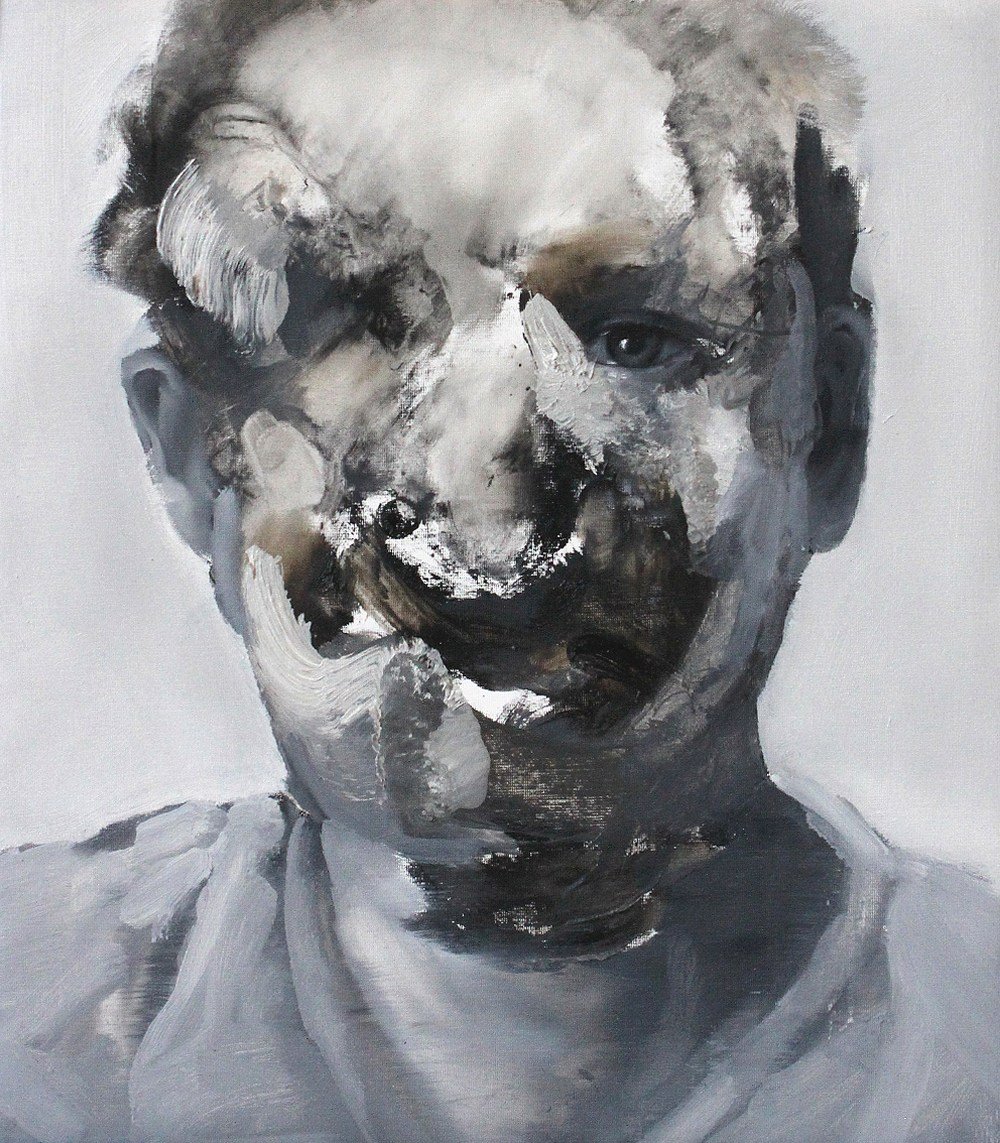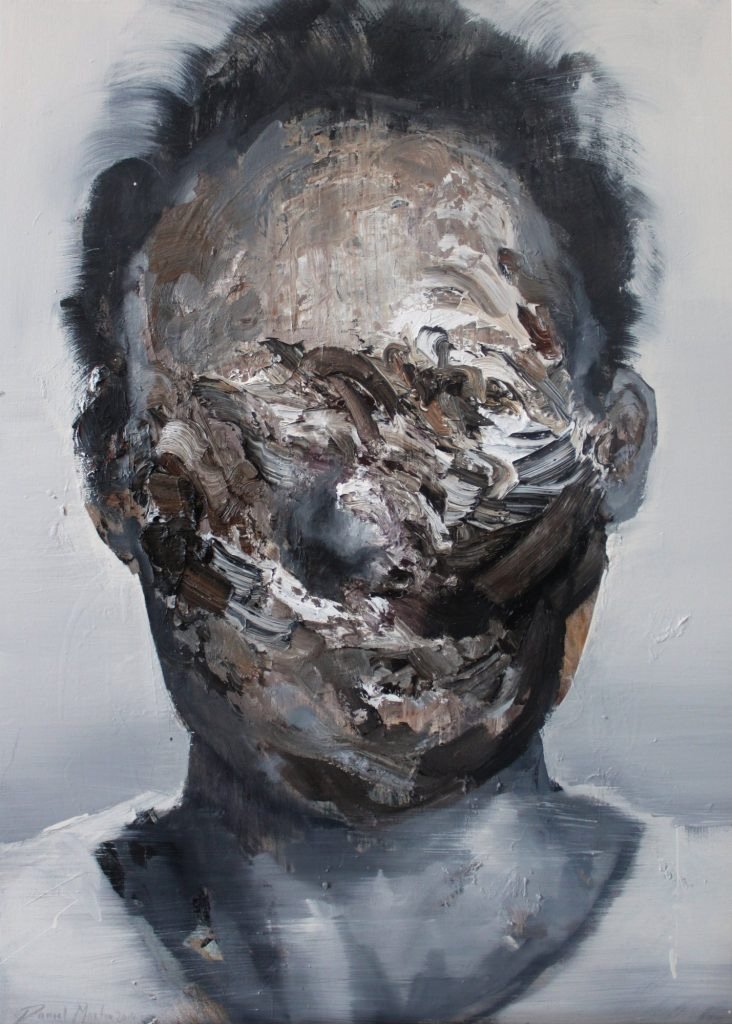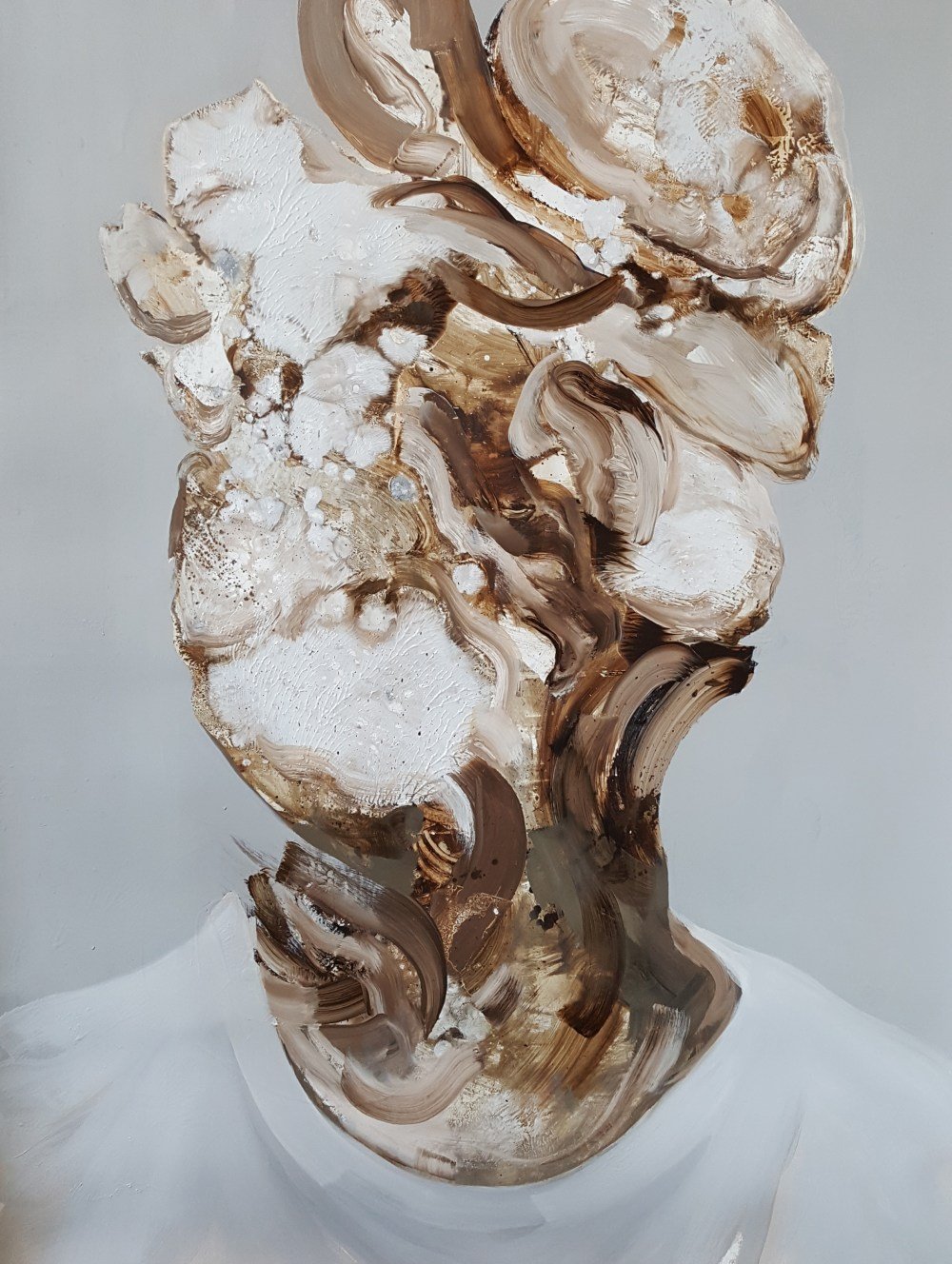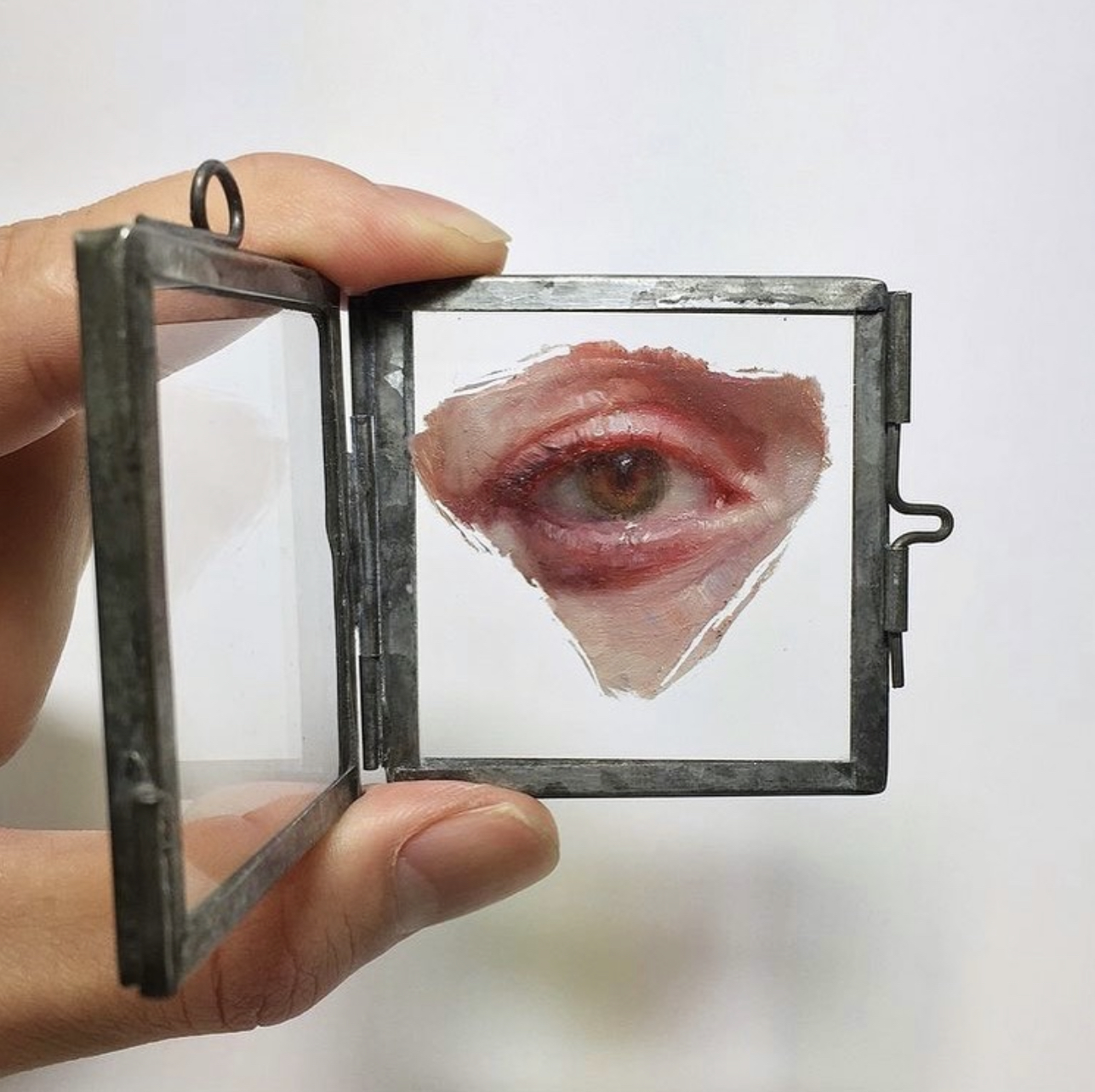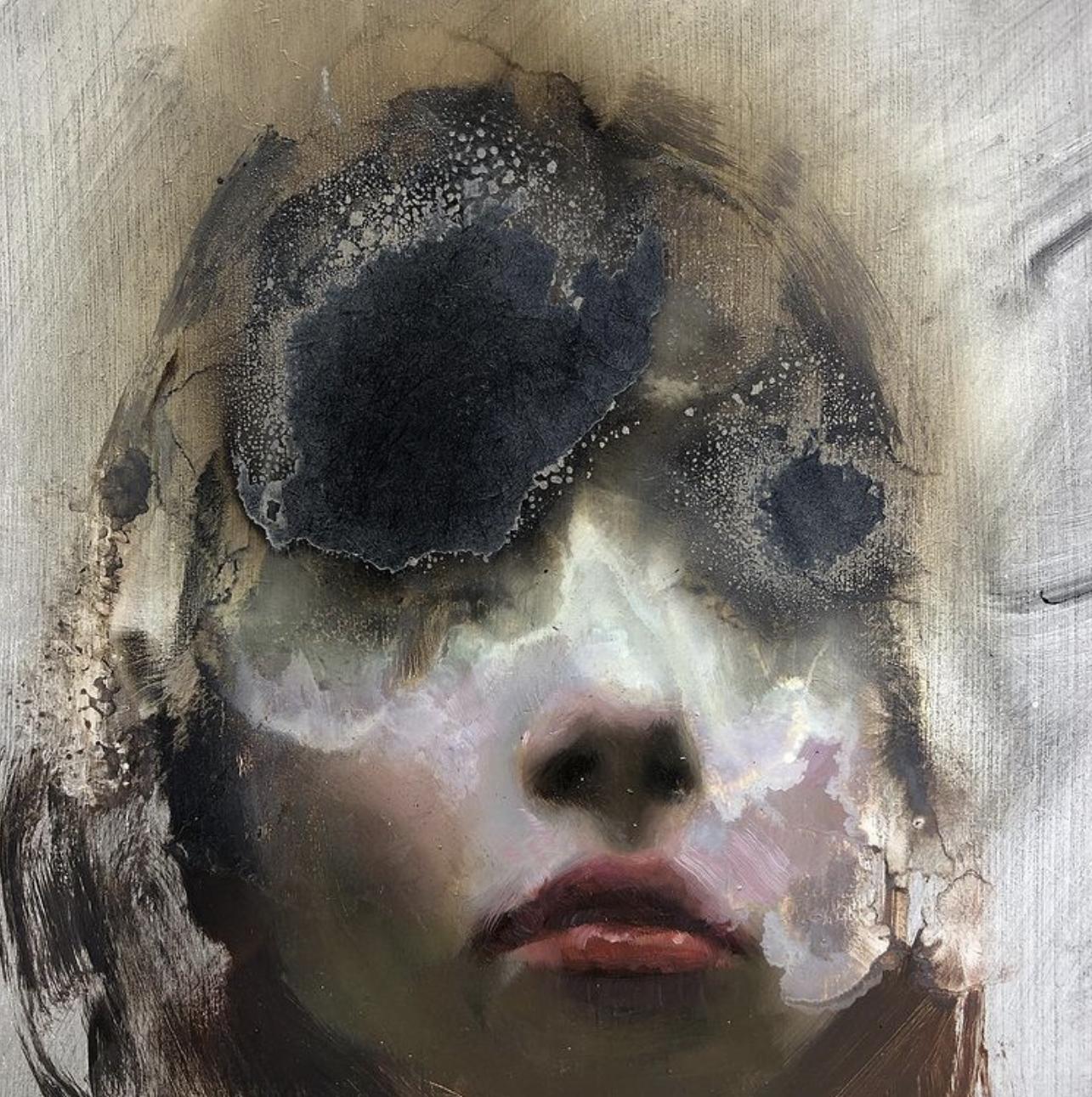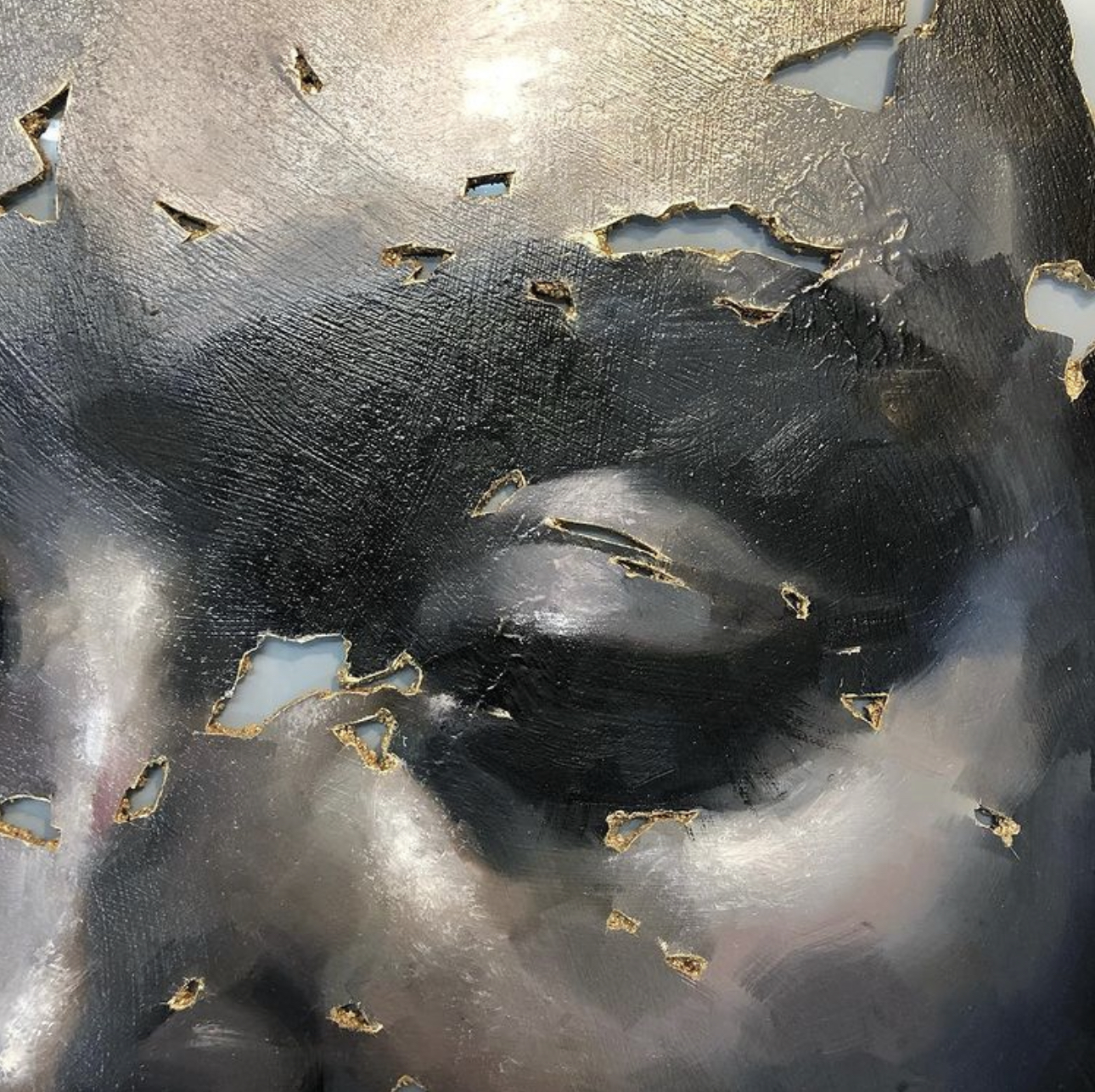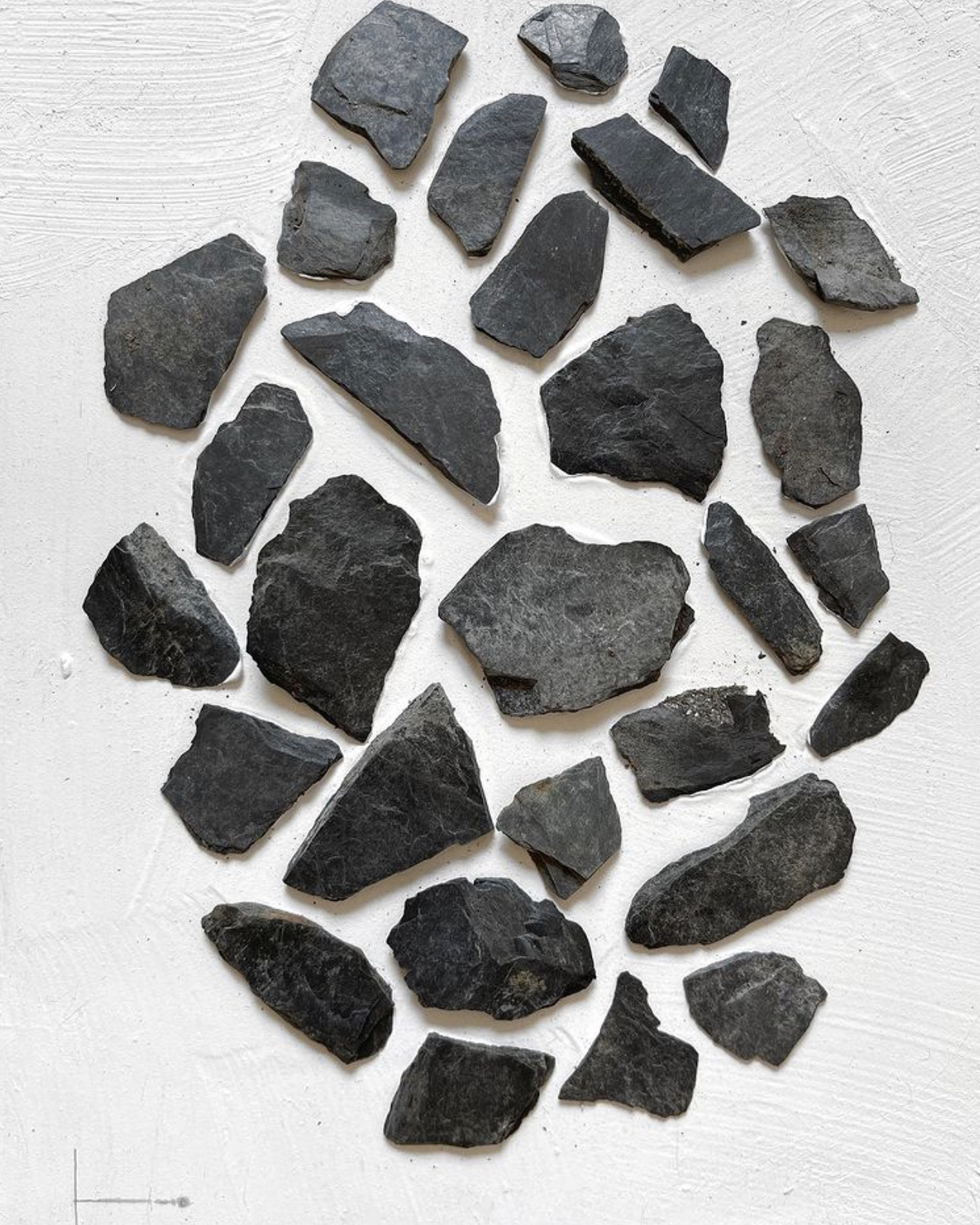The Disruption In Contemporary Portrait Paintings
Artwork by Henrik Uldalen, image from the artist’s website
Contemporary art is known for its lack of a unifying theme and ideology. In a contemporary context, even the portrait paintings we have today look different than the ones we had ten or twenty years ago. The portrait artists today might not be household names as the old masters, but they are bringing innovations into the centuries-old art category.
In the past few years, I have noticed much disruption brought into this space and the evolvement of the genre itself. I will use four working contemporary artists as an example to take a deeper look into this phenomenon.
Contemporary artists in focus
Artworks by Henrik Uldalen, images from artist’s website
Henrik Uldalen (Norwegian, b. 1986) is known for his thick impasto paint applications and the use of different painting mediums. The faces and figures in his paintings are often obscured by large paint blobs or slowly dissolved into the dark background.
Artworks by Juan Miguel Palacios, images from the artist’s website
Juan Miguel Palacios (Spanish, b. 1973) brings an extra dimension to his work by painting on vinyl and drywall. The delicate female faces were first painted on vinyl and then had parts removed, exposing the broken wall underneath.
Artworks by Yulia Bas, images from the artist’s website
Yulia Bas (Russian, b. 1986) frequently uses erasure to create fragmented faces and figures. Her work often has purposefully made textures using mixed media, ranging from fine and subtle to rough and bold.
Artworks by Daniel Martin, images from the artist’s website
Daniel Martin (Dutch, b. 1982)’s portrait work often starts with a realistic foundation but then are partially damaged or completely transformed by adding in abstract paint movements or other physical objects.
The meanings of the damaged portraits
The literal interpretation is that they are showing us a world full of flaws, imperfections, and brokenness. However, It is in the things that we neglect or shy away from, do these artists find inspiration and even beauty. Undeniably, there is an ethereal and mesmerizing quality in the works of Henrik and Juan. The muted faces in Yulia's works feel like a meditative experience, but their silence speaks out loud. Some of Daniel's portraits might look disturbing at first glance, but they are nothing short of intrigue.
Showing the dark and unpleasant side of life sounds like another countercultural movement, but the conceptual component takes the meaning one step deeper. The ephemeral beauty in Henrik's works is deeply rooted in his exploration of nihilism and existentialism. Juan uses physical damage to create “wounds” on the faces and communicate strong emotions like mourning. Yulia uses erasure and obscurity to explore the concept of imperfections and self-perception. Daniel utilizes deformity for unsettling emotions but also studies the transformation from clarity to chaos.
When we have a glimpse of these artists' lives, we reveal even deeper meanings and connections between the artworks and themselves. Artists are generally empathetic human beings, sensitive to the pain and suffering in the world. As Henrik candidly admitted, painting has been a form of therapy for him to deal with loneliness, fear, and confusion since childhood. And Juan's "wounded faces" came from his experiences living in New York and observing the hidden struggles in people's lives. Regardless of what we think, painting is the artist's way of expression. Therefore, these portraits are ultimately self-portraits.
Further reading on the artists
The Dark Arts Of Henrik Uldalen
Juan Miguel Palacios "Wounded"
Yulia Bas Interview and Gallery
Defiled Faces By Daniel Martin
The disruptive nature of contemporary art
All these approaches to portraiture are essentially the result of relentless experimentation. The practice of painting oils on canvas has been around for hundreds of years, and the obvious way to reinvent portraiture is to change the very process of its creation. Here is how contemporary art differentiates itself from traditional paintings:
First of all, contemporary artists are more open to using new surface materials, such as glass, cork, and vinyl. Secondly, alternative paint materials are also used more frequently, including paper, sand, metal, and plastic. And finally, various tools and techniques are utilized to create interesting textures and effects, such as dissolving paint with mineral spirits, pressing fabrics against paint, and burning parts of the painting with a blow torch.
Left 2: Henrik experimenting with painting on glass and the burning technique, images from the artist’s Instagram
Right 2: Yulia experimenting with painting on cork and stone slabs, images from the artist’s Instagram
Stylistically, contemporary art draws influences from prior art movements and incorporates different art styles. From these four artists alone, we can already see traces of neoclassicism, abstract expressionism, photorealism, surrealism, and digital art in their works. The fusion of different genres and styles cultivates new ideas and keeps contemporary art interesting.
But does the old mix well with the new, and would the abstract blend with the representational? It might sound counter-intuitive, but they do work well in practice. Because art has always been a reflection of the current society and culture, and both the past and present can resonate with people. And even though from two different ends of the spectrum, abstraction can be used to counterbalance representation, an act of mixing chance and intent. Disruption is not always about reinventing the wheel. Sometimes, it is about using the familiar to create the unexpected.
The ever-changing role of portraiture
One of the main functions of portrait art was to capture someone's likeness, but that has changed forever with the introduction of photography. Some even critique that portraiture has become pointless in the contemporary art world. This may be true for its definition, but the general public's obsession with portraiture hasn't waned. One thing to understand is that the human face and figure are mnemonic symbols. We are drawn to portrait and figure art because they are very recognizable and memorable. Moreover, they can be used to portray not only the physical but psychological characteristics of a person, which opens up endless possibilities for portrait art.
With accurate representations no longer a responsibility, many contemporary artists have looked at portraiture with fresh eyes and embraced their artistic freedom. Using the four aforementioned artists as an example, their works have derived much from the conventional portrait painting we used to know. First of all, the likeness is no longer a priority, as shown in the loose proportions and unfinished parts. Secondly, the subject is not a specific person anymore but a generalized someone for the viewers to identify with or relate to. And lastly, the faces have become more of a vehicle for the artists to carry their thoughts and feelings.
It is fair to say that the term portraiture is no longer an adequate categorization for these artworks. Some call them poetic paintings, and some say narrative portraits. But regardless of the terminology, paintings with the human face will continue to evolve into new forms, and the artists behind them will keep challenging our views on art.

